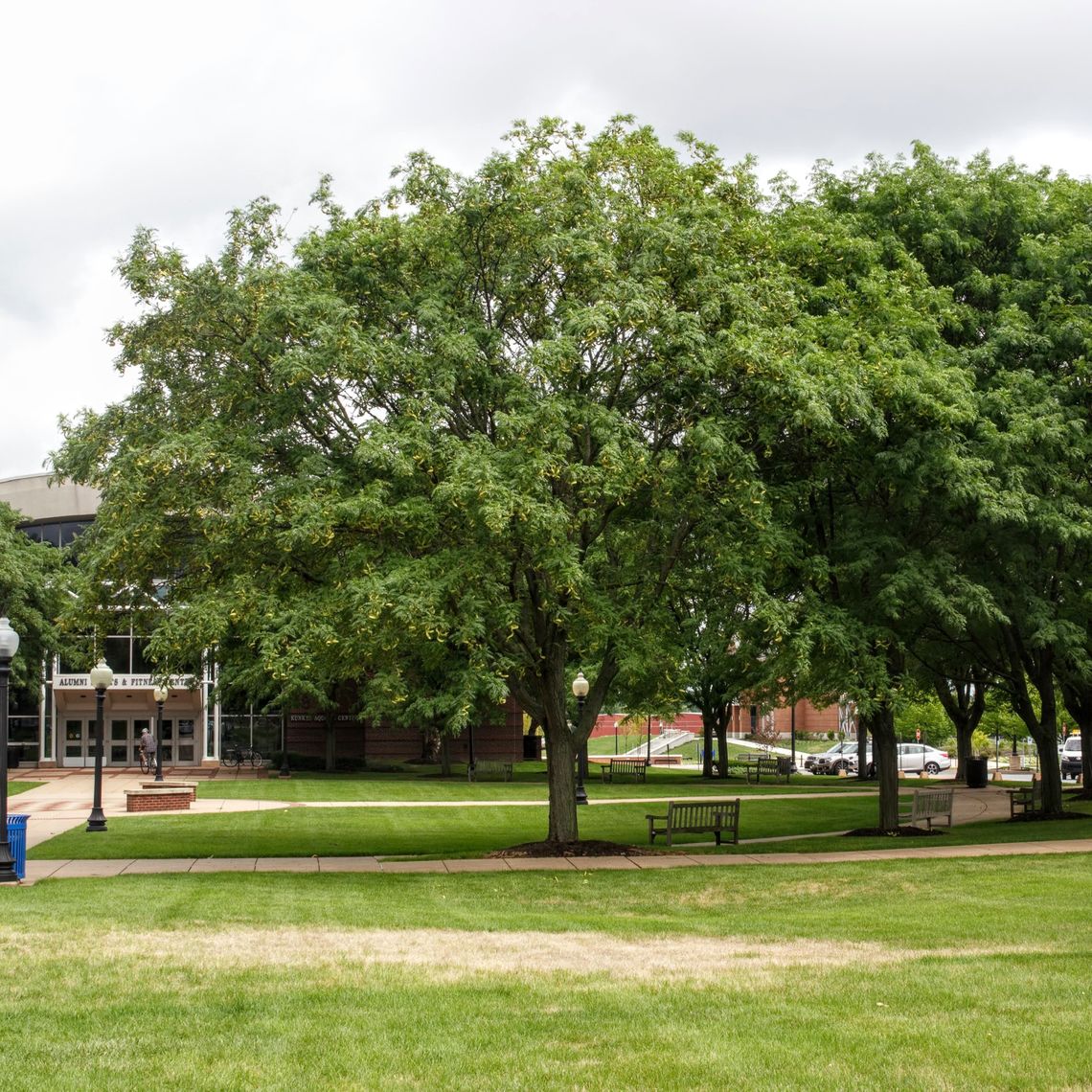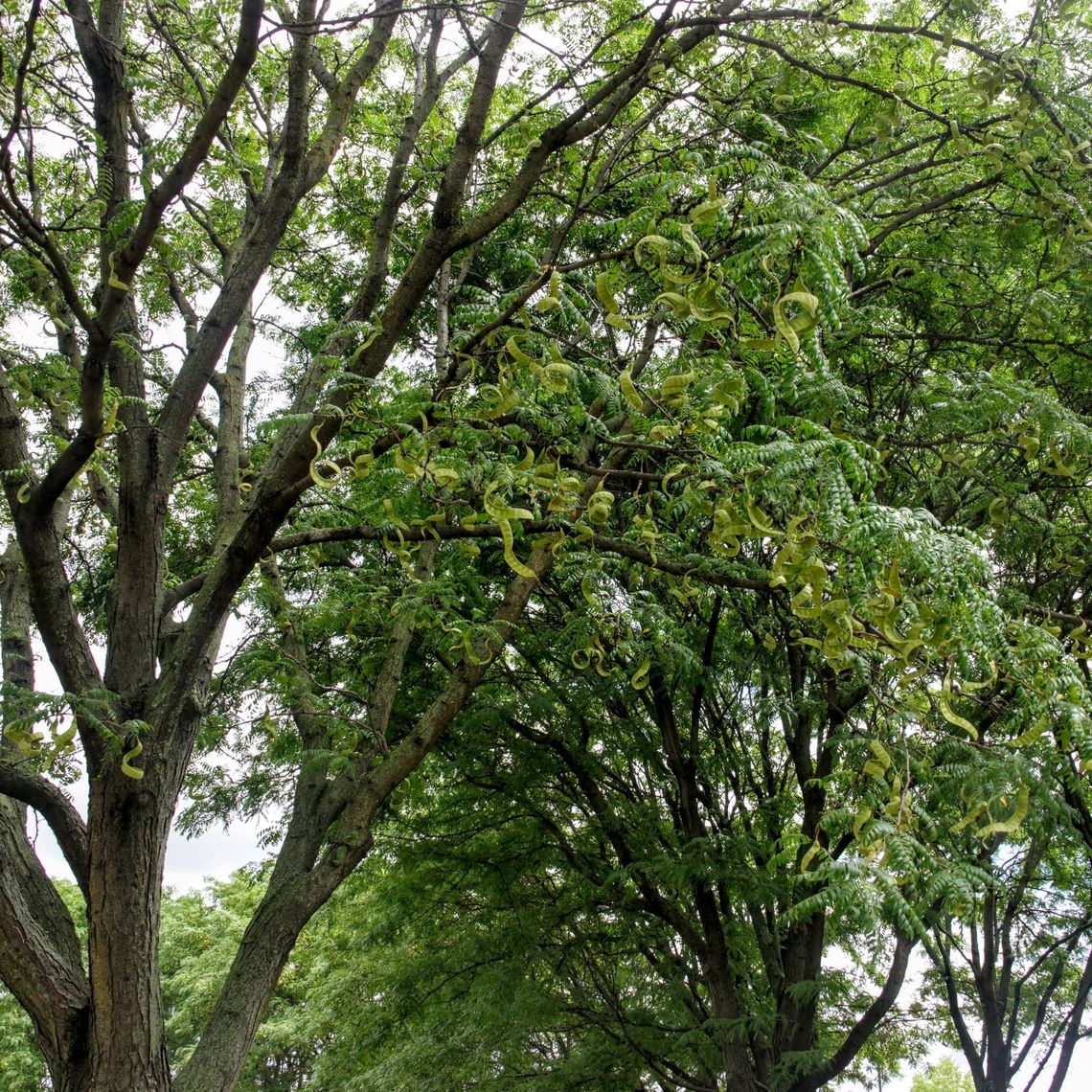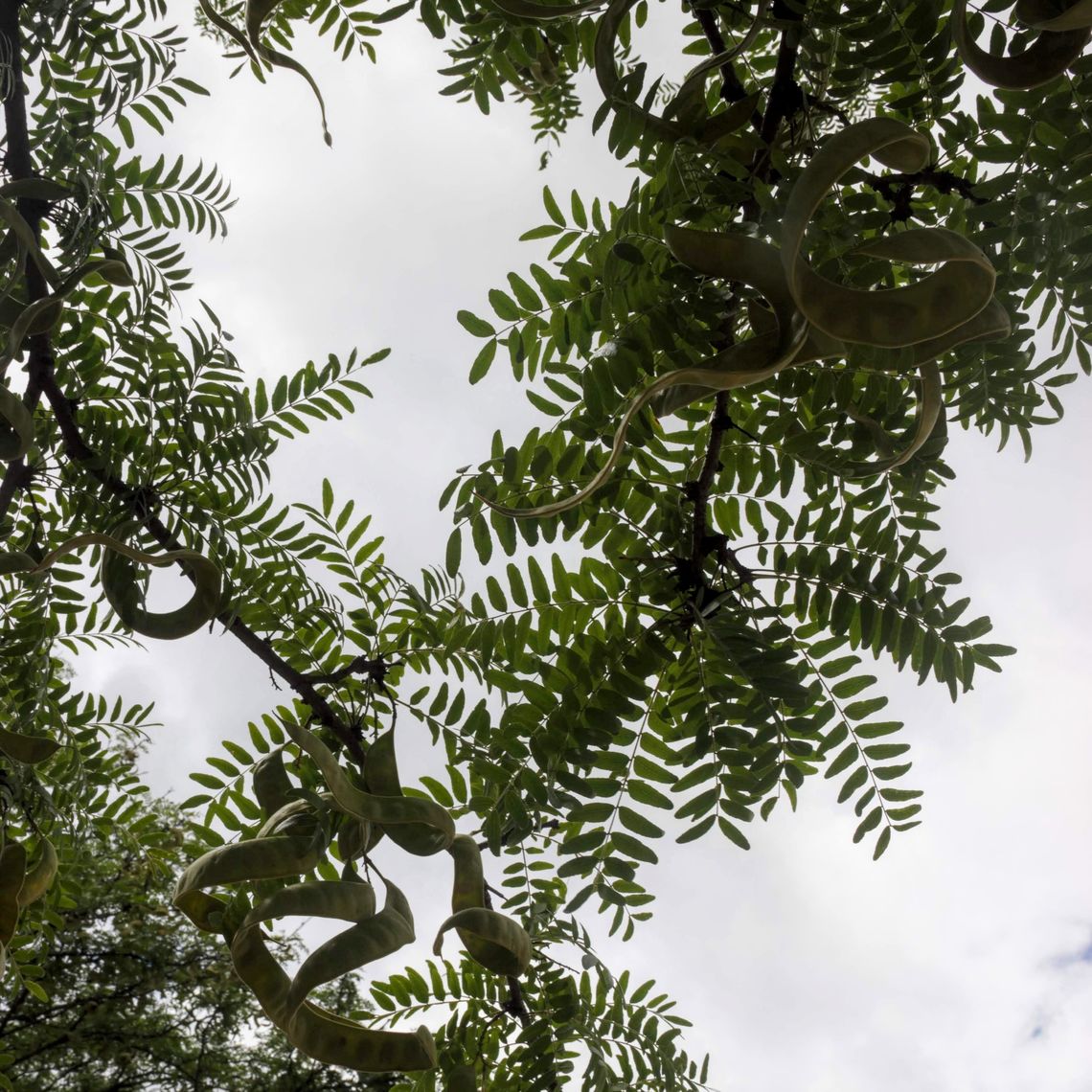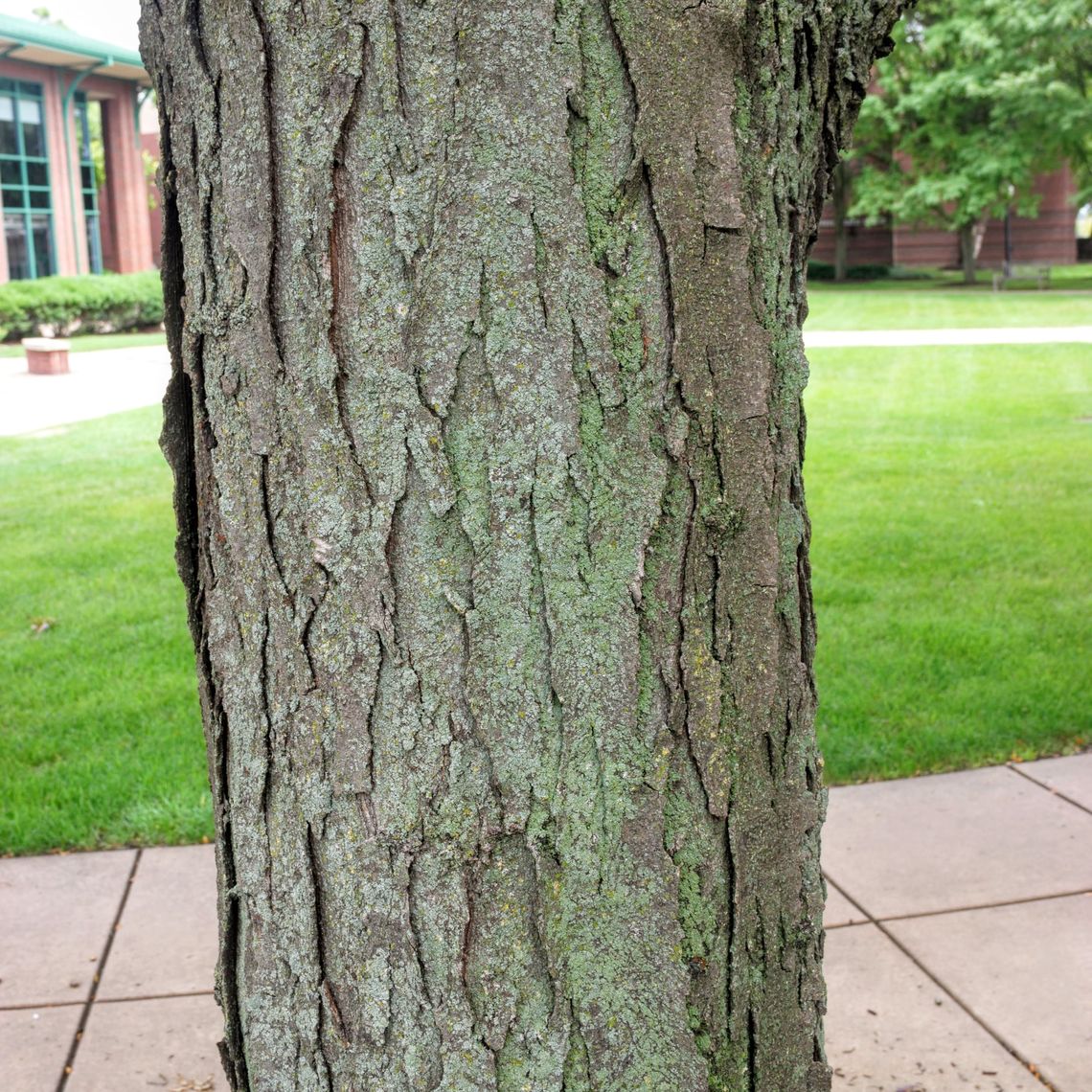Thornless Common Honey Locust (Gleditsia triacanthos var inermis)
This tree is often used in city and suburban landscapes because of its durability and adaptability, and because it lacks the large thorns the common honey locust has. This tree's leaves are composed of 20-30 small oval shaped leaflets that turn a beautiful rich yellow in the fall. The tree produces long, curly, and red-brown pods that remain on the tree well into the winter. This tree attracts birds and small mammals.
Family: Fabaceae (Pea)
Characteristics: The leaves are pinnately compound (leaflets attached in pairs along stem, with one on top) with 20-30 small, half-inch-long, oval-shaped leaflets. In the fall, leaves turn a rich golden yellow. This tree produces thin, curled, 7-inch to 8-inch-long, red-brown pods. Bark is dark gray and breaks into long flat plates that curl along the edges. This tree has a short trunk and has an open, rounded-spreading crown. It grows 30-70 feet high and wide.
Foliage: Deciduous (leaves lost seasonally)
Geographic Origin: North America (native)
Cultivation Notes: Requires medium maintenance. Does best in full sun. Prefers moist and well-drained soils, though it is tolerant to a wide range of soil types. This tree is also tolerant to wind, high heat, drought, and saline conditions.
Number on Campus: 55
Sources: Dirr, Morton Arboretum, Missouri Botanical Garden




